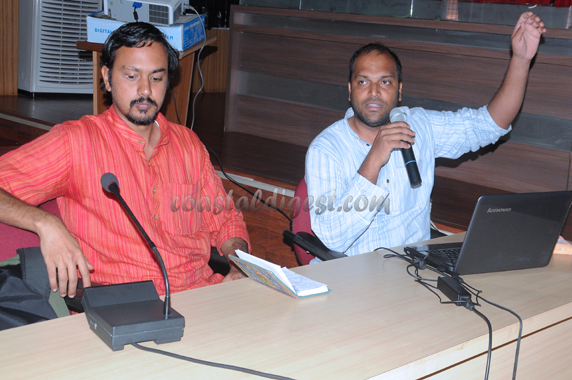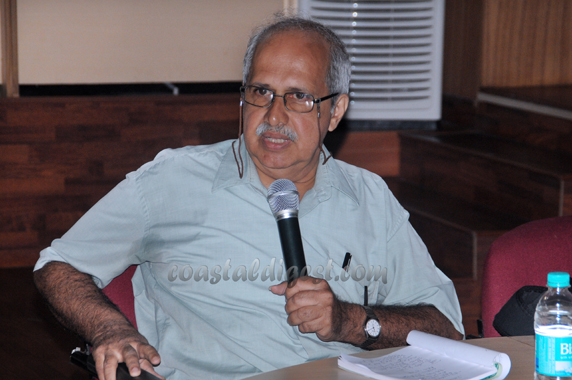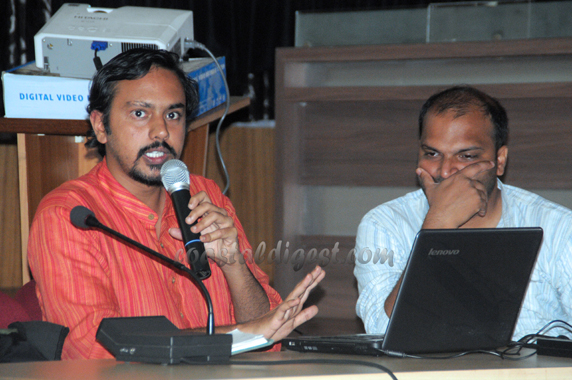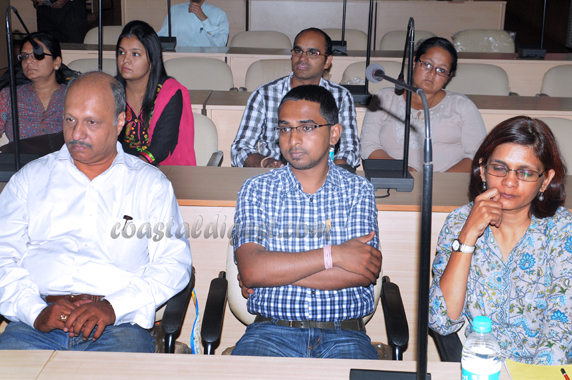
Mangalore, Oct 29: After few days of in-depth study of water management systems in and around Mangalore, which receives about 100 days of rainfall on an average every year and yet experiences mild water shortage in summer, a team of members from India Water Portal (IWP), set up by Arghyam Foundation in 2007, recounted their experiences on rain-harvesting techniques and well rejuvenation methods adopted by people living in western Rajasthan, which experiences acute shortage of water around the year.
During an interaction with journalists at Nethravathi auditorium in Zilla Panchayat office here on Monday, IWP consultant manager Ashish Panda spoke about survival in the Thar desert in Western Rajasthan, a region where the average rainfall in a year is 100 mm. This year, there was merely two hours of rainfall in Rajasthan in the entire year. Despite this constraint, people survive and thrive in the dry state with the help of conservation of water in storage tanks through catchment areas. Through rain-water harvesting and water management system, there is water available for daily use in few areas of Rajasthan for the next 4-5 years. With this water, the people of Rajasthan manage even irrigation for crops such as wheat and mustard in those areas, he said.
The harvesting is done with the help of roofs as catchment areas in houses, and even water channels in Jaisalmer Fort, from which collection of upto 3 crore litres of water is done. In the city of Jodhpur, almost 90 per cent of homes harvest water, as they need water for their survival, he said, going on to brief about the two-tier system of lakes and water storage tank, because of which survival was possible in the dry land.
He further briefed on how the local communities in the region next to the Aravallis got together to rejuvenate a river in Alwar district that had been dried up from over 30 years, because of which around 285 wells had also dried up. Through forests, ponds, farm bunds and the continuous effort of the local communities, an entire river was revived in a span of five years and the water table rose across 17 villages. This in turn, rejuvenated forests and the soil moisture grew enough for crops to be cultivated, he said.
In contrast, the Indira Gandhi Canal Project implemented by the government spending crores of rupees, which proposed water to be brought from the Himalayas to the districts of Rajasthan, was futile, with only 2 percent of the irrigation being achieved, he added.
Rain-water harvesting in coastal Karnataka
IWP team member Shrikanta Prasanna from Bangalore, briefed on the success stories of rainwater harvesting in coastal Karnataka such as in Farangipete Church, Yenepoya Medical College, Manipal University and others.
Rejuvenation of rivers and wells
Interacting with journalists, Mr Panda said that dried or drying rivers could be rejuvenated without diversion of other rivers by ensuring proper rainwater harvesting and water management. With reference to the Nethravati Diversion or Yettinahole Project, he said that akin to rejuvenation of the river in Alwar district, Rajasthan which a budget of Rs 30 lakhs, smaller investments were better than spending huge sums of money on a single water project. The government should enable the role of a facilitator than implementing projects of higher budgets, he said.







Comments
Add new comment